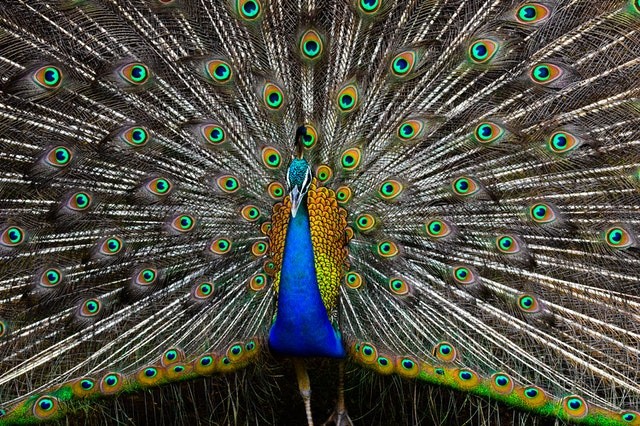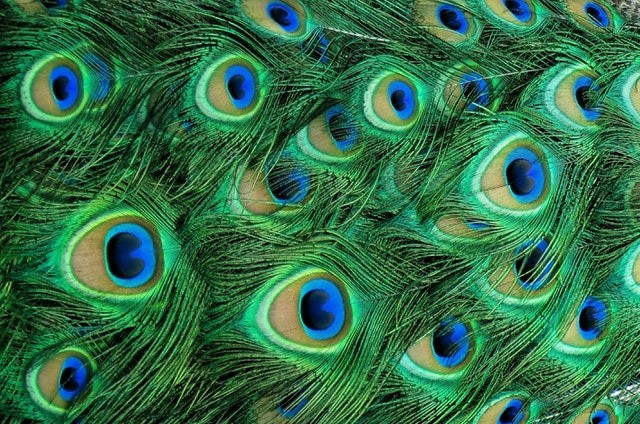You might not be aware of this when you visit peacocks in close-by farms, parks, and zoos, but green and blue peacocks, those mythical creatures with shining plumage, are only indigenous to Asia - though their incredible beauty has led them to different parts of the world.
There's so much more to peafowl than their enthralling tail feathers. Explore their complex nature with these 6 peacock facts.

1. Only Males Possess Those Long, Beautiful Feathers
Like other species of bird, it's the male species of the peafowl that has such conspicuous color and lovely attractive tail feathers. The males are known as peacocks - females are known as peahens - though both sexes are usually referred to as peacocks. A group of peafowl is called an ostentation, a muster, or a bevy
2. It Takes Peacocks Three Years to Grow Their Tail Feathers
When they hatch and for some months afterward, male and female peachicks look alike. The males don't begin to develop their color until they are around three months old, and it's not until they are grown-ups at three years old that their well-known display tails are in full feather.
3. The Indian Peacock is the National Bird of the Country
The blue or Indian peacock (Pavo cristatus) in 1963 was chosen as the national bird of India. Its range covers almost the whole Indian subcontinent, where it is a species of least concern - usual and healthy populations throughout its range, as stated by the IUCN. It has a wealthy tradition of representation in Indian art and Hindu religious culture, both being connected with gods and goddesses and also royalty.
Also Read : 10 Strange But Awesome Facts About Nature
4. Peacock Shed Their Tail Feathers Frequently
Peacocks annually shed their feathers naturally after the mating season, when they can be assembled by those who want to keep a collection of the glaringly patterned plumage.
5. That Dramatic Plumage is For the Attraction of Peahens
When a peacock exhibits his dramatic tail, it isn't just attractive and entertaining to our human eyes. Peahens determine the fitness of the males in their region through this visual display, during which subtle rattling made by the males creates a fantasy of spots flying over a glimmering background.
Some experts speculate that the females find the male feathers attractive due to the fact that they resemble blueberries, while others believe it's because the colorful display can help safeguard them from predators.

6. The Crests on Their Heads Are Surprisingly Crucial Sensors
With their enthralling plumage, peacocks have a lot going on that their crests, which look like floating crowns, are usually overlooked. Peafowl crests serve a crucial purpose in copulating. Both males and females possess these long, specially shaped feathers, but for peahens, they're overly decorative - they use them as a sensor.
Related Article : Birds are Apparently Resilient to Heat Stress Due to Climate Change
For more news, updates about peacocks and similar topics don't forget to follow Nature World News!
© 2025 NatureWorldNews.com All rights reserved. Do not reproduce without permission.





